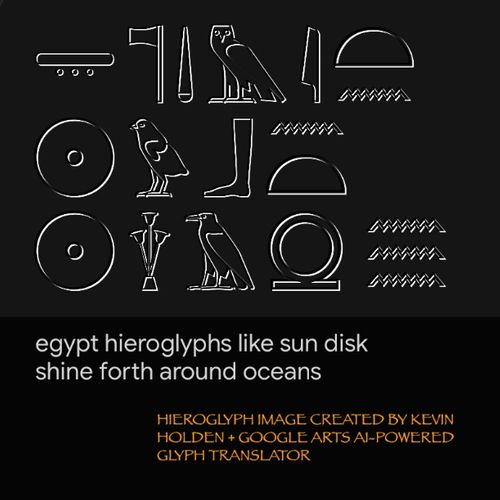Egypt's sacred hieroglyphs + modern rebirth shine at British Museum show
Oct 04, 2022 · 4 mins read
0
Share
[Part 1] The script of the gods and the great empire builders
The creation myth animating hieroglyphics - the painted script that Egyptian priests and even ancient Greek scholars believed was handed down by the gods - is being spotlighted by the British Museum in a fantastical exhibition charting 5000 years of the exquisite writing system.
Save
Share
“Hieroglyphs were ‘sacred writing’ or ‘the writing of the words of the gods,’” says Ilona Regulski, Curator of Egyptian Written Culture at the museum. Her team has crafted what’s predicted will be a blockbuster show - one that could spark a new worldwide wave of Egyptomania.
Save
Share
The rise, fall and astounding resurrection of hieroglyphs were all intricately linked with empire building across the ages: the first great unifier of the Egyptian kingdom relied on emerging pictographs to propel his advances more than 50 centuries ago, Regulski says.
Save
Share
Nefertiti and Akhenaten, the rulers who sparked twin revolutions in Egypt’s art and religion 3300 years ago, commissioned sculptors to carve hieroglyphs across the open-air temples of a new city heralding their worship of a sole Sun-God, and the quest for a cultural renaissance.
Save
Share
The young prince and charioteer who became their successor, Tutankhamen, had spellbinding glyphs painted across his afterlife palace. These scripted guidelines on meeting the gods and navigating the labyrinth to paradise were also inscribed inside his sculpted golden mask.
Save
Share
Egyptian hierograms and carved twins of the pharaohs and their queens “were created for eternity,” say scholars at the British Museum. “Placed in temples and tombs, the statues and wall images were meant as vehicles for the spirits of deities, kings and privileged officials.”
Save
Share
Scholars and architects of classical Greece who crossed the Mediterranean to explore Egypt were mesmerised by the pharaohs’ age-old pyramids and pictograms, and by the power of the priests in temples that crisscrossed the deserts, sea coast and Nile riverside.
Save
Share
Alexander the Great was likewise captivated by Egypt’s timeless civilisation and calligraphy - its fusion of art, religion and writing - and presented himself as the son of an Egyptian god to its people and priests while overthrowing the kingdom’s Persian military rulers.
Save
Share
Archaeologists excavating spiritual sites and cities along the Nile have uncovered an array of carvings of Alexander incarnated as an Egyptian deity, with hieroglyphs spelling out his descent from the god Amun and anointment as the rightful heir to the pharaonic throne.
Save
Share
“The King of Upper and Lower Egypt,” declares one painted limestone sculpture now held by a Swiss gallery. “The one who is chosen by the god Re.” At least part of the pivotal priesthood began charting Alexander’s divine lineage in temple chronicles recorded hieroglyphically.

Save
Share
0
